How to Take Proper Care of Your Sewing Scissors
Taking care of your sewing scissors is not just about keeping them sharp; it's about ensuring they remain your trusty sidekick in all your sewing adventures. Imagine trying to cut through fabric with dull scissors—it's like trying to slice a loaf of bread with a butter knife! Frustrating, right? Proper maintenance can help you avoid such scenarios, allowing your scissors to glide through fabric as smoothly as a hot knife through butter. In this article, we will explore essential tips and techniques that will not only prolong the lifespan of your scissors but also enhance their performance, making every sewing project a breeze.
Before diving into the nitty-gritty of maintenance, it’s crucial to understand the different types of sewing scissors available. Each type serves a unique purpose, and knowing their specific functions can help you choose the right pair for your projects. For instance, fabric scissors are designed for cutting fabric, while embroidery scissors are perfect for detailed work. By understanding the role each type plays, you can appreciate why proper care is essential.
Regular cleaning is a fundamental aspect of maintaining your sewing scissors. Over time, debris and residue can accumulate on the blades, hampering their performance. To keep your scissors in top condition, consider the following cleaning methods:
- Wipe the blades with a soft cloth after each use to remove fabric fibers and oils.
- Use a bit of rubbing alcohol on a cotton pad to disinfect the blades, especially after cutting through sticky materials.
- For stubborn grime, a gentle scrub with a toothbrush can work wonders.
Additionally, it’s essential to prevent rust, which can occur if your scissors are exposed to moisture. Store them in a dry place and consider applying a light coat of sewing machine oil to the blades occasionally to keep them rust-free.
Keeping your scissors sharp is crucial for precise cutting. Dull scissors can lead to frayed edges and uneven cuts, which can be frustrating when you’re aiming for perfection. There are several sharpening methods available:
- Professional sharpening services: If you're unsure about sharpening them yourself, a professional can restore your scissors to their factory sharpness.
- DIY sharpening: You can use a sharpening stone or even aluminum foil to sharpen your scissors at home. Simply cut through the foil a few times, and you’ll notice a difference!
Regularly checking and sharpening your scissors will ensure they remain effective tools in your sewing arsenal.
Proper storage is vital for preventing damage to your scissors. Leaving them out in the open can lead to accidental nicks or dulling. Here are some effective storage solutions:
- Use a protective case or sheath to cover the blades when not in use.
- Store them in a drawer with other sewing tools, but ensure they are separated from other sharp objects.
- Consider a magnetic strip on your wall for easy access and visibility while keeping them safe.
By implementing these storage solutions, you can protect your scissors from potential hazards and ensure they remain sharp and ready for action.
Even the most seasoned sewers can make mistakes that may damage their scissors. Here are some common pitfalls to avoid:
- Using scissors on materials they aren’t designed for, like paper or cardboard, which can dull the blades.
- Neglecting to clean them regularly, leading to buildup that can affect performance.
- Storing them improperly, which can result in nicks or bends in the blades.
Being aware of these mistakes can help you maintain the functionality and longevity of your scissors.
Recognizing when your scissors require maintenance is crucial. Some key signs that indicate your scissors are dull or damaged include:
- Difficulty cutting through fabric smoothly.
- Frayed edges on the cut fabric.
- Visible rust or corrosion on the blades.
If you notice any of these signs, it’s time to take action—whether that means cleaning, sharpening, or seeking professional help.
Selecting the appropriate scissors for your sewing projects can significantly impact your results. When choosing, consider:
- The type of fabric you’ll be working with.
- Your specific sewing needs—do you need precision or durability?
- Your personal comfort—how does the handle feel in your hand?
Taking the time to choose the right scissors will pay off in the quality of your work.
Sometimes, professional care is necessary for your scissors. Factors such as heavy use or damage can warrant seeking professional sharpening and maintenance services. If you find yourself frequently sharpening your scissors or if they seem to have lost their edge despite your best efforts, it may be time to consult an expert.
Q: How often should I sharpen my sewing scissors?
A: It depends on usage, but generally, if you notice difficulty cutting, it’s time to sharpen.
Q: Can I use my sewing scissors for other materials?
A: It's best to use them solely for fabric to maintain their sharpness and effectiveness.
Q: What should I do if my scissors are rusty?
A: Clean them with rubbing alcohol and a soft cloth, and consider applying sewing machine oil to prevent further rust.
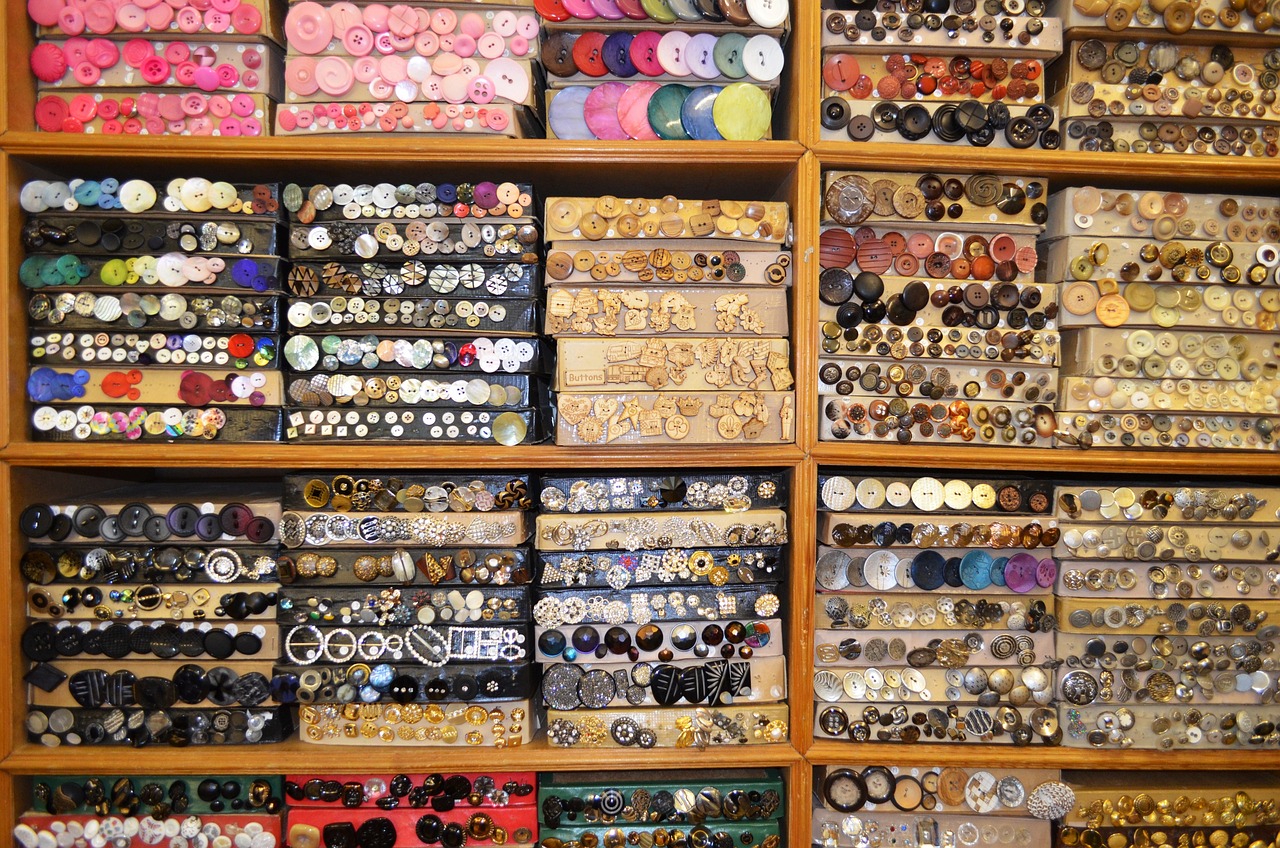
Understanding Your Sewing Scissors
This article provides essential tips and techniques for maintaining your sewing scissors, ensuring they remain sharp and effective for all your sewing projects. Learn how to prolong their lifespan and enhance performance.
When it comes to sewing, having the right tools can make all the difference, and your sewing scissors are no exception. There are various types of scissors, each designed for specific tasks, and understanding these differences is crucial for achieving the best results in your projects. For instance, you might have fabric scissors, which are typically larger and designed to cut through multiple layers of fabric with ease. These scissors are often made from high-quality steel to ensure they stay sharp longer.
Then there are embroidery scissors, which are smaller and have pointed tips, allowing for precise cutting around intricate designs. These scissors are perfect for trimming threads or getting into tight spaces without damaging your fabric. Additionally, you might come across pinking shears, which create a zigzag edge to help prevent fraying, making them ideal for raw edges.
Each type of scissors serves its unique purpose, and using the wrong pair can lead to frustration and poor results. For example, using fabric scissors to cut paper can dull the blades quickly, while using embroidery scissors for thick materials might not yield the clean cuts you need. Hence, it’s essential to choose the right scissors for the job and to take proper care of each pair.
Understanding your scissors also means recognizing the components that make them effective. The blades are the most critical part, and they come in various shapes and sizes depending on their intended use. The pivot point, where the two blades meet, is also vital; a well-aligned pivot allows for smooth cutting action. Lastly, the handles should be comfortable to hold, as this can significantly impact your cutting precision and comfort during long sewing sessions.
In summary, knowing the different types of sewing scissors and their specific uses is fundamental. It not only enhances your sewing experience but also ensures that you can maintain your tools effectively. By using the right scissors for each task, you can avoid unnecessary wear and tear, making your sewing journey smoother and more enjoyable.
Regular cleaning is crucial to maintaining the performance of your sewing scissors. This section covers effective cleaning methods to remove debris and prevent rust, ensuring your scissors remain in top condition.
Keeping your scissors sharp is essential for precise cutting. Here, we discuss various sharpening methods, including professional services and DIY techniques, to help you achieve optimal sharpness for your sewing tasks.
Proper storage is vital for preventing damage to your scissors. This section outlines effective storage solutions that protect your scissors from dulling and other potential hazards when not in use.
Many sewers make mistakes that can damage their scissors. Here, we highlight common pitfalls and how to avoid them, ensuring your scissors remain functional and effective for years to come.
Recognizing when your scissors require maintenance is crucial. This section discusses key signs that indicate your scissors are dull or damaged, prompting timely care to restore their performance.
Selecting the appropriate scissors for your sewing projects can impact your results. This part offers guidance on choosing the right type of scissors based on your specific sewing needs and preferences.
Sometimes, professional care is necessary for your scissors. This section explores when to seek professional sharpening and maintenance services, ensuring your tools receive the best possible treatment for longevity.
Q: How often should I clean my sewing scissors?
A: It's a good practice to clean your scissors after every sewing session to remove any debris and prevent rust.
Q: Can I sharpen my scissors at home?
A: Yes, there are several DIY methods for sharpening scissors, but if they are severely dull, consider professional sharpening.
Q: What is the best way to store my scissors?
A: Store your scissors in a protective case or on a magnetic strip to prevent them from getting dull or damaged.
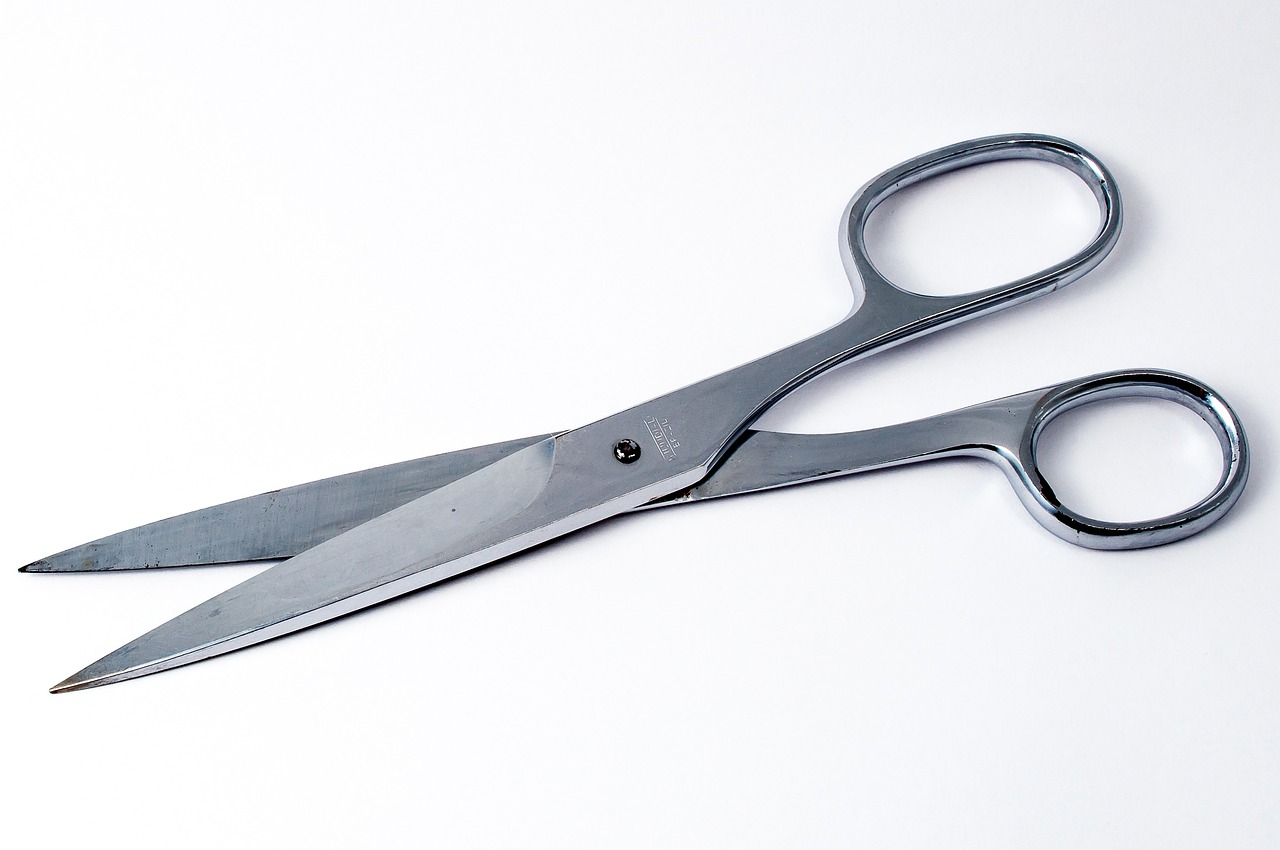
Cleaning Your Scissors
Keeping your sewing scissors clean is not just a matter of aesthetics; it's essential for their performance and longevity. Over time, fabric fibers, threads, and even oils from your hands can accumulate on the blades, leading to dullness and rust. Imagine trying to cut a piece of fabric with a pair of dirty scissors—it’s like trying to write with a pen that’s run out of ink! To maintain their sharpness and effectiveness, you should incorporate regular cleaning into your sewing routine.
So, how do you clean your scissors properly? First, gather your supplies. You’ll need a soft cloth, some warm soapy water, and a small brush or toothbrush. Avoid using abrasive materials, as they can scratch the blades. Start by dampening the cloth with the soapy water and gently wiping down the blades. Make sure to clean both sides thoroughly. If you notice any stubborn debris stuck in the pivot area, use the small brush to dislodge it. This area is often overlooked, but it’s crucial for smooth operation.
After you've cleaned the blades, it's time to rinse them off. Use a clean, damp cloth to remove any soap residue, and then dry them immediately with a soft towel. Leaving moisture on the blades can lead to rust, which is a sewing scissors’ worst enemy. To further protect against rust, consider applying a drop of mineral oil to the pivot point and along the blades. This not only helps prevent rust but also keeps the scissors moving smoothly.
Here’s a quick summary of the cleaning steps:
- Gather your cleaning supplies: soft cloth, warm soapy water, and a small brush.
- Dampen the cloth and wipe the blades, cleaning both sides.
- Use a brush for stubborn debris in the pivot area.
- Rinse with a clean damp cloth and dry immediately.
- Apply a drop of mineral oil to the blades and pivot point for protection.
By following these simple steps, you’ll ensure that your scissors remain in top-notch condition, making each cutting task a breeze. Remember, a little care goes a long way in extending the life of your tools. So, the next time you finish a sewing project, don’t forget to give your scissors the attention they deserve!

Sharpening Techniques
Keeping your sewing scissors sharp is not just about maintaining their appearance; it's about ensuring they perform optimally for all your sewing projects. A dull pair of scissors can turn a straightforward task into a frustrating ordeal, causing uneven cuts and frayed edges. So, how do you keep them in tip-top shape? Let's dive into some effective sharpening techniques that will have your scissors slicing through fabric like butter.
First off, you have a couple of options when it comes to sharpening your scissors: DIY methods and professional services. If you're the hands-on type, you might enjoy trying your hand at DIY sharpening. There are several tools available, such as sharpening stones, honing guides, and specialized scissors sharpeners. For instance, a ceramic sharpening rod can be a game-changer. Just run the blade along the rod at the same angle as the blade's edge, and you'll notice a significant difference. However, be cautious! If you apply too much pressure, you might end up damaging the blade instead of sharpening it.
For those who prefer a more hands-off approach, seeking out professional sharpening services can be a wise choice. Many local craft stores or sewing shops offer this service, and they often have the expertise and equipment to restore your scissors to their original glory. Additionally, some professionals use machines that can sharpen multiple pairs at once, ensuring a consistent edge on each blade. A quick trip to a professional can save you time and effort, especially if you have multiple pairs that need attention.
It's also essential to understand the right frequency for sharpening your scissors. Generally, if you find yourself exerting more force than usual to cut through fabric, or if you notice the edges tearing instead of slicing, it’s a clear sign that your scissors need sharpening. As a rule of thumb, regular maintenance every few months can keep your scissors performing well. However, this can vary based on how often you use them and the types of materials you cut.
Additionally, if you’re ever in doubt about your sharpening skills, consider investing in a scissors sharpening service for a more professional touch. They can often provide insights and tips on how to maintain your scissors post-sharpening, ensuring you get the most out of your investment. Remember, a well-maintained pair of scissors is not just a tool; it's an extension of your creativity!
Here are some common questions regarding sharpening techniques:
- How often should I sharpen my sewing scissors? It depends on usage, but generally, every few months is a good rule of thumb.
- Can I use a regular knife sharpener on my scissors? It's not recommended, as scissors have a different blade angle and structure than knives.
- What are the signs that my scissors need sharpening? If they struggle to cut fabric smoothly or leave frayed edges, it’s time for a sharpening.
- Is it better to sharpen scissors myself or hire a professional? If you're comfortable and have the right tools, DIY can be effective; otherwise, a professional service is a safe bet.
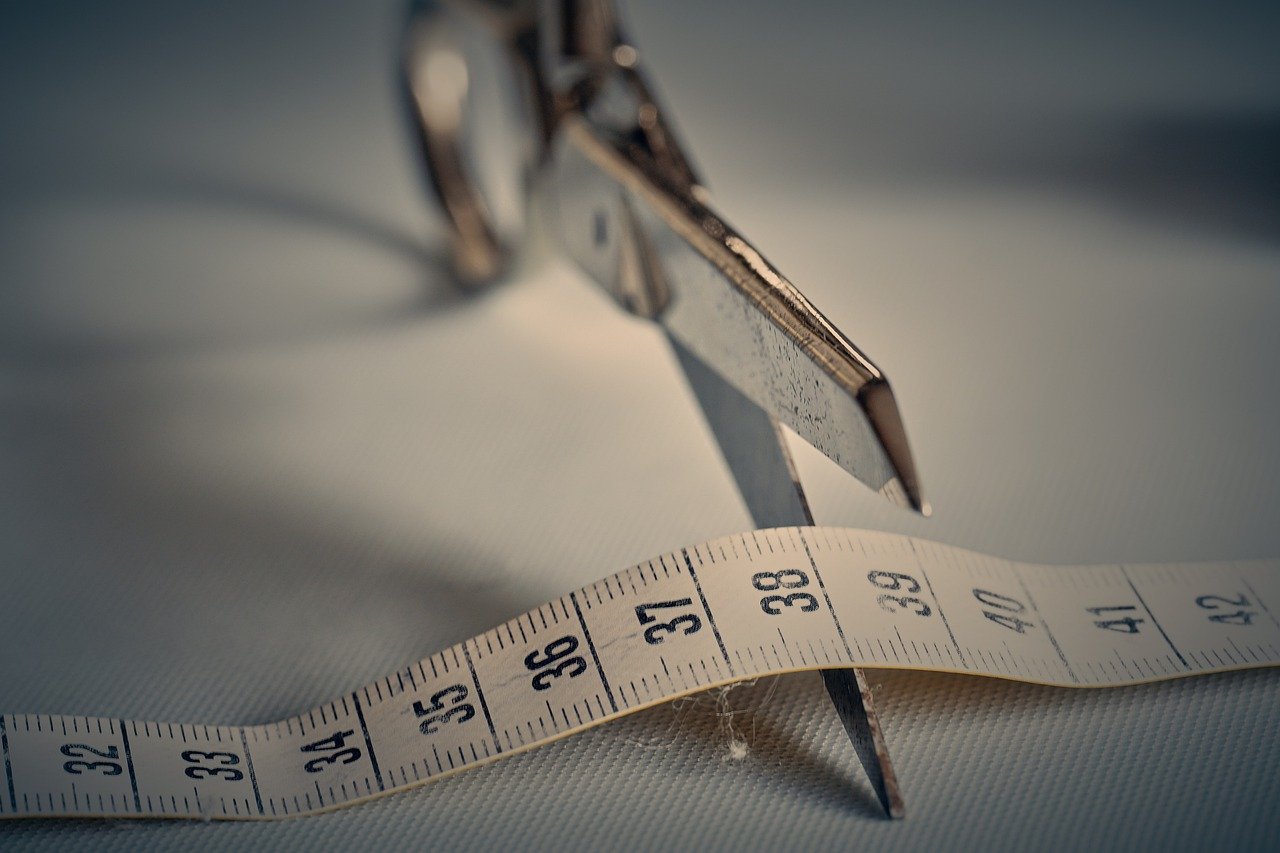
Storage Solutions
When it comes to taking care of your sewing scissors, proper storage is just as important as regular cleaning and sharpening. Imagine if you tossed your prized scissors into a drawer full of junk—what would happen? They might get scratched, dulled, or even worse, damaged beyond repair! To avoid this, you need to create a safe haven for your scissors, where they can rest without fear of harm.
First and foremost, consider using a dedicated case or pouch. This not only keeps your scissors protected but also makes them easily accessible when you need them. A soft fabric pouch can prevent scratches while a hard case can shield them from any accidental drops. If you’re a fan of organization, a scissor holder or a magnetic strip mounted on the wall can be a stylish and functional option. Not only does it keep your scissors visible, but it also adds a touch of creativity to your sewing space.
Another important aspect of storage is environmental conditions. Make sure to store your scissors in a dry place to prevent rusting. Humidity can be a real enemy, so consider using silica gel packets in your storage area to absorb moisture. If you live in an area with high humidity, a dehumidifier could be a worthwhile investment for your sewing room.
Additionally, avoid storing your scissors in places where they might come into contact with other tools or materials that could dull their blades. For instance, keeping them in the same drawer as your rotary cutter or other sharp tools could lead to accidents and damage. Instead, designate a specific spot for your scissors, perhaps in a cabinet or on a shelf, where they can be kept separate from other items.
Lastly, if you have multiple pairs of scissors, consider labeling them according to their use. You could have a pair for fabric, another for paper, and so on. This not only helps in identifying them quickly but also reduces the chances of using the wrong scissors for a particular task, which can lead to dulling and damage.
In summary, the way you store your scissors can significantly impact their longevity and performance. By investing a little time and thought into their storage solutions, you’ll find that your sewing experience becomes smoother and more enjoyable. Remember, your scissors are an extension of your creativity, so treat them with the care they deserve!
- How often should I clean my sewing scissors? It's recommended to clean your scissors after every few uses or whenever you notice debris on the blades.
- What is the best way to sharpen my scissors? You can use a sharpening stone, a specialized scissor sharpener, or seek professional services for optimal results.
- Is it okay to store scissors in a drawer? It's best to avoid storing them loosely in a drawer. Use a case or holder to prevent damage and dulling.
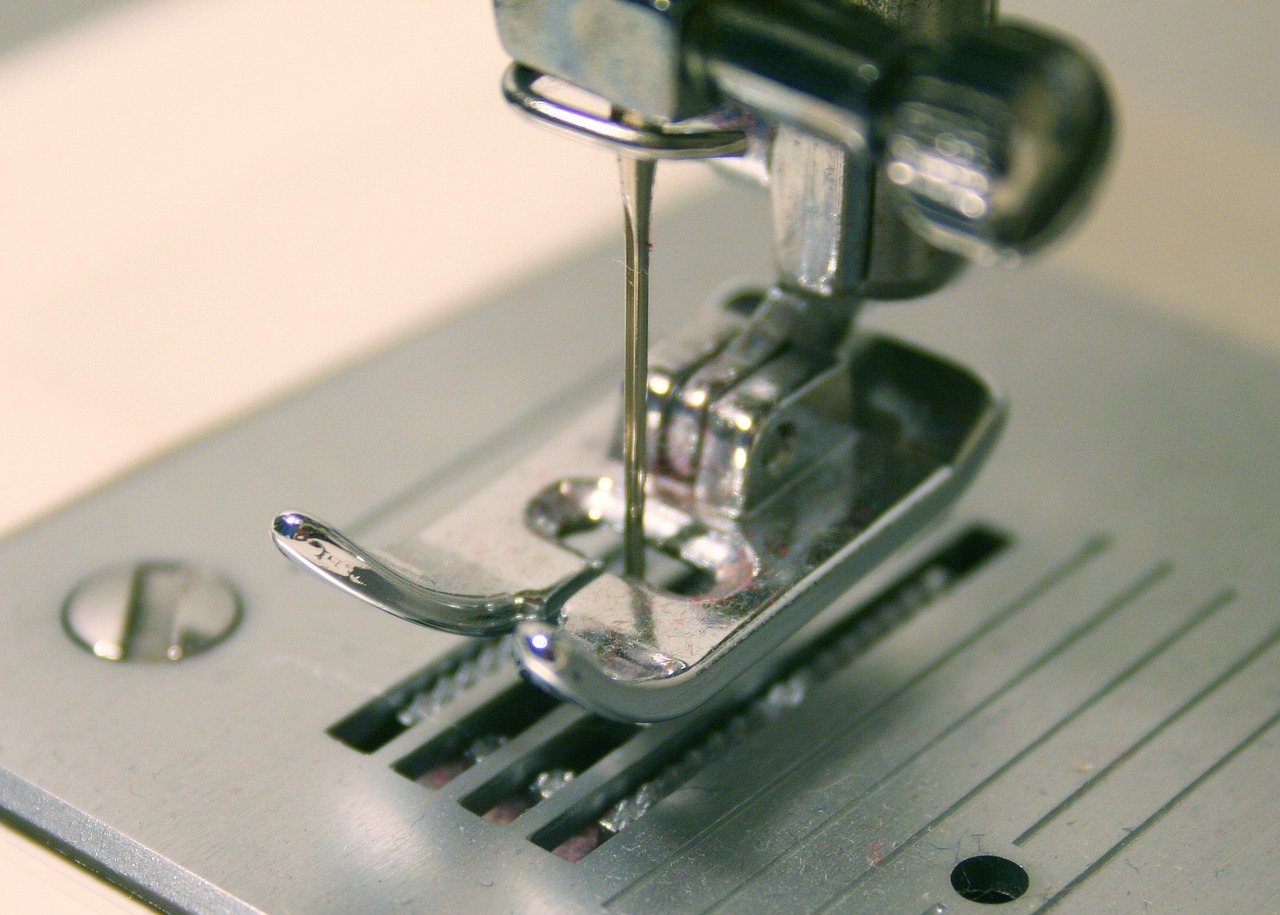
Common Mistakes to Avoid
When it comes to taking care of your sewing scissors, avoiding common mistakes can significantly extend their lifespan and enhance their performance. One of the most prevalent errors is using your sewing scissors for cutting materials other than fabric. Yes, it might be tempting to grab your trusty scissors for a quick snip of paper or thread, but this can lead to dull blades and decreased cutting efficiency. Think of your scissors as a finely tuned sports car; using them for the wrong tasks is like taking that car off-road. It just doesn't belong there!
Another mistake many sewers make is neglecting regular cleaning. Over time, debris from fabric fibers, thread, and even adhesive can accumulate on the blades, which can affect how smoothly they cut. Imagine trying to slice through a loaf of bread with a butter knife; it just won't work! To keep your scissors in top condition, it's essential to wipe them down after each use with a soft cloth, ensuring that they remain free from any residue that could hinder their performance.
Additionally, improper storage is a common pitfall that can lead to damage. Leaving your scissors loose in a drawer or tossed in a sewing bag without protection can cause them to become dull or even nicked. Instead, consider investing in a protective case or a magnetic strip to keep them safe and secure. Just like how you wouldn’t leave your favorite shoes out in the rain, your scissors deserve a safe spot too!
Moreover, many sewers overlook the importance of proper sharpening techniques. Using the wrong method can ruin your scissors rather than restore them. For instance, using a sharpening stone might seem like a good idea, but if not done correctly, it can lead to uneven blades. If you're unsure about sharpening your scissors yourself, don't hesitate to seek professional help. Think of it as going to a dentist; sometimes, it's best to leave it to the experts!
Finally, ignoring the signs that your scissors need attention is a mistake that can cost you time and effort. If you find yourself struggling to cut through fabric, or if the blades seem to snag rather than glide smoothly, it’s time for a little TLC. Regularly assessing your tools will ensure that they remain sharp and effective, making your sewing projects a breeze. Just like a gardener keeps an eye on their plants, you should keep an eye on your scissors!
In summary, by avoiding these common mistakes—such as misusing your scissors, neglecting to clean them, improper storage, using incorrect sharpening methods, and ignoring maintenance signs—you can ensure that your sewing scissors stay sharp, functional, and ready for any project that comes your way. Remember, taking care of your tools is just as important as the projects you create with them!
Q: How often should I clean my sewing scissors?
A: It's best to clean your sewing scissors after each use to prevent debris buildup and keep them in optimal condition.
Q: Can I use my sewing scissors for cutting paper?
A: It's advisable to avoid using sewing scissors for cutting paper, as this can dull the blades. Instead, use dedicated paper scissors for that purpose.
Q: How do I know when my scissors need sharpening?
A: If you notice that your scissors are snagging or struggling to cut through fabric smoothly, it's time to sharpen them.
Q: Is it better to sharpen my scissors myself or seek professional help?
A: If you're not confident in your sharpening skills, it's often best to seek professional help to avoid damaging the blades.
Q: What is the best way to store my sewing scissors?
A: Store your sewing scissors in a protective case or on a magnetic strip to keep them safe and prevent dulling.
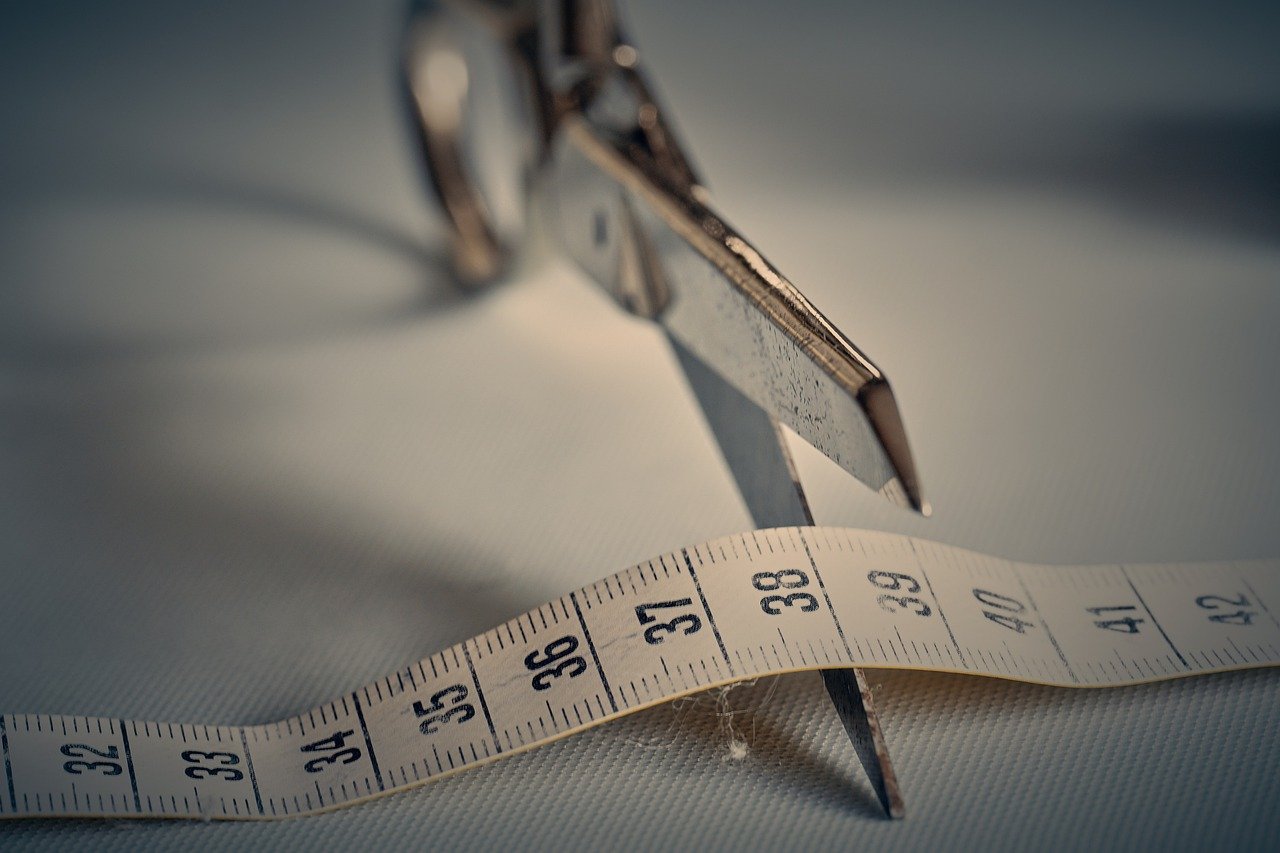
Signs Your Scissors Need Attention
As a sewing enthusiast, you know that your scissors are your best friends in the crafting world. But just like any relationship, it requires attention and care to keep things running smoothly. So, how do you know when your beloved scissors are crying out for help? There are several telltale signs that indicate your scissors may need some TLC. Let's dive into these signs and help you understand when it's time to take action.
First and foremost, if you find yourself struggling to cut through fabric, it’s a clear indication your scissors are losing their edge. You might notice that the blades are not gliding through the material as effortlessly as they used to. Instead, you may have to apply more pressure, which can lead to uneven cuts and frayed edges. This is not only frustrating but can also affect the overall quality of your sewing projects. If you hear a snagging or tearing sound while cutting, that’s another red flag that your scissors are in need of sharpening.
Next, consider the quality of the cut. When your scissors are in good condition, they should produce clean, sharp lines. If you start seeing ragged edges or the fabric starts to fray right after cutting, it’s time to reassess your tools. A good pair of scissors should make you feel like a magician, effortlessly turning your fabric into beautifully cut pieces. If that magic is fading, don’t ignore it!
Another sign to watch out for is rust or corrosion on the blades. If you notice any discoloration or rough patches on the metal, it’s crucial to address this immediately. Rust not only affects the cutting ability but can also spread and cause permanent damage to your scissors. Regular cleaning can help prevent this, but if you spot any rust, consider it a wake-up call to clean and possibly sharpen your scissors.
Additionally, pay attention to the pivot point of your scissors. If you find that the blades are not aligning properly or if they feel loose when you open and close them, it could indicate that the screw needs tightening or that the scissors have become misaligned. This misalignment can lead to uneven cuts and can make sewing a frustrating experience. A quick adjustment might be all they need, but if the problem persists, it may be time for professional help.
Lastly, if you’re using your scissors for multiple tasks, be mindful of how they perform across different materials. For instance, using fabric scissors on paper can dull the blades significantly. If you notice that your scissors are not performing well even on fabric, it’s a strong signal that they need attention. Remember, each type of scissors has its specialty, and using them correctly can prolong their lifespan.
In summary, being attentive to your sewing scissors can save you time, effort, and money in the long run. Here’s a quick recap of the signs to look out for:
- Difficulty cutting through fabric
- Ragged or frayed edges on cuts
- Presence of rust or corrosion
- Loose or misaligned blades
- Poor performance across different materials
By keeping an eye on these indicators, you can ensure your scissors remain sharp, effective, and ready for any sewing challenge that comes your way. Remember, a little maintenance goes a long way in preserving the quality of your tools and enhancing your sewing experience!
Q: How often should I sharpen my sewing scissors?
A: It depends on how frequently you use them. A good rule of thumb is to sharpen them every few months or whenever you notice a decline in cutting performance.
Q: Can I use my fabric scissors for cutting paper?
A: It's best to avoid using fabric scissors on paper, as this can dull the blades. Instead, use dedicated paper scissors to keep your fabric scissors sharp.
Q: What is the best way to clean my scissors?
A: Use a soft cloth with mild soap and water to clean the blades. Avoid soaking them and ensure they are completely dry before storing them to prevent rust.
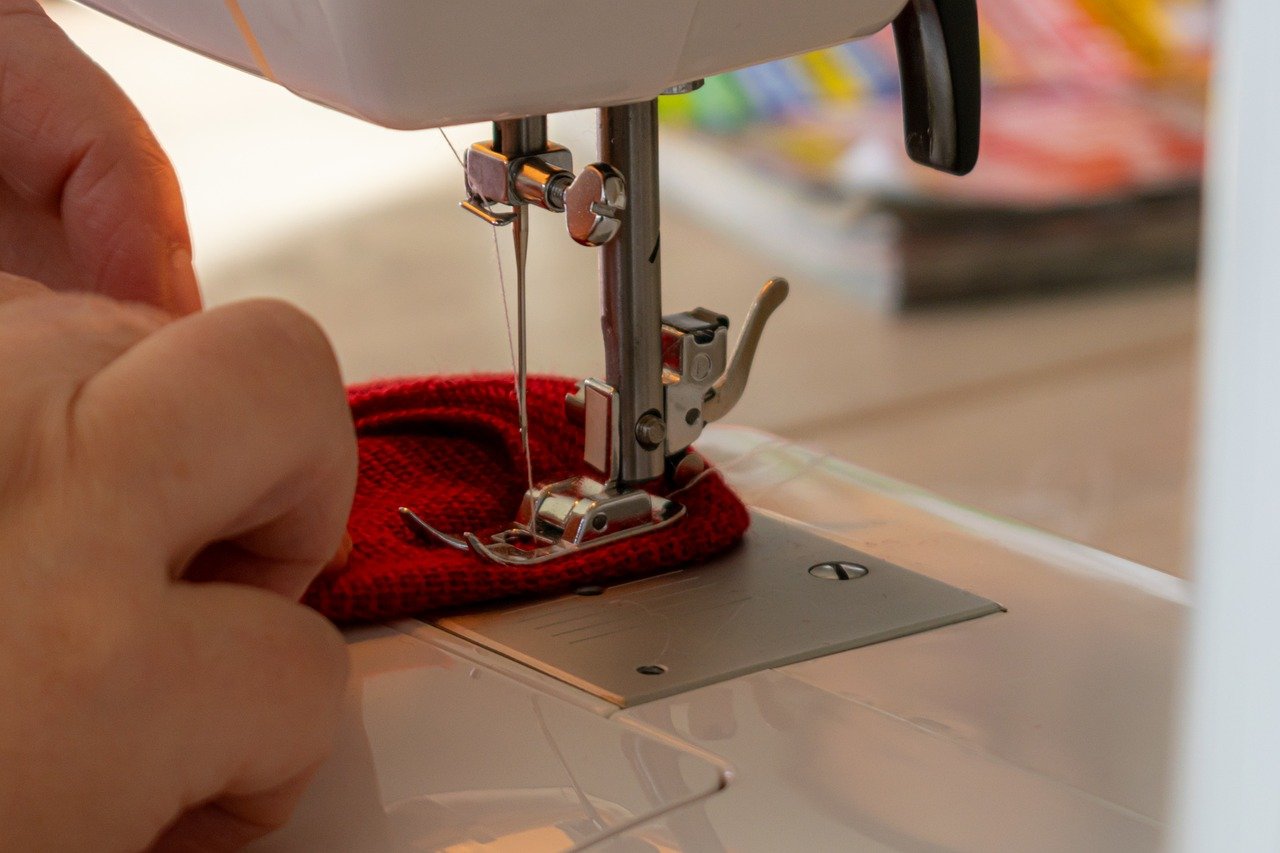
Choosing the Right Scissors
When it comes to sewing, having the right tools can make all the difference, and your choice of scissors is no exception. Just like a chef wouldn’t use a butter knife to carve a roast, you shouldn’t rely on the wrong pair of scissors for your sewing projects. So, how do you navigate the sea of options available? It’s all about understanding the unique features and purposes of different scissors to match them with your specific needs.
First off, let’s talk about the basics. There are several types of sewing scissors, each designed for particular tasks. For instance, fabric scissors are typically larger with a longer blade, allowing for smooth, long cuts through multiple layers of fabric. On the other hand, embroidery scissors are smaller and have pointed tips, perfect for snipping threads and making precise cuts in tight spaces. Knowing these distinctions is vital; it’s akin to knowing when to use a hammer versus a screwdriver in your toolbox.
Moreover, consider the material of the scissors. High-quality stainless steel is often preferred because it resists rust and maintains sharpness longer than cheaper alternatives. Some scissors also come with special coatings that enhance their cutting ability and prolong their lifespan. When you invest in a good pair, you’re not just buying scissors; you’re investing in your craft. It’s like choosing a reliable car for a long road trip—you want something that will get you there safely and efficiently.
Another aspect to think about is the handle design. Ergonomic handles can make a world of difference, especially if you spend long hours sewing. They provide comfort and reduce hand fatigue, allowing you to work on your projects without discomfort. If you can, try out different pairs to see which ones feel best in your hands. Remember, sewing is not just about precision; it’s also about comfort and enjoyment.
Lastly, don’t overlook the importance of your sewing style and preferences. If you frequently work with delicate fabrics, you might prefer a lighter pair of scissors that offers more control. Conversely, if you often cut through thicker materials, a sturdier pair with a heavier blade might be your best bet. Take some time to reflect on your sewing habits and choose scissors that align with them. After all, the right tools can turn a frustrating task into a joyful experience.
In summary, choosing the right scissors isn’t just a matter of picking the first pair you see. It requires careful consideration of the type, material, handle design, and your individual sewing needs. By investing a little bit of time into understanding your options, you’ll ensure that your scissors become reliable companions in your sewing journey. And remember, just like a good pair of shoes, the right scissors can elevate your craft to new heights!
- What type of scissors is best for cutting fabric? Fabric scissors are specifically designed for cutting fabric. They usually have longer blades and are made of high-quality steel to ensure clean cuts.
- How often should I sharpen my sewing scissors? It’s recommended to sharpen your sewing scissors every few months, depending on how frequently you use them. If you notice they are pulling or snagging, it’s time for a sharpen!
- Can I use my fabric scissors for other materials? While it’s tempting to use fabric scissors for paper or other materials, it’s best to keep them exclusive to fabric to maintain their sharpness and effectiveness.
- What is the difference between embroidery scissors and thread snips? Embroidery scissors are typically small with pointed tips for detailed cutting, while thread snips are even smaller and designed specifically for quickly snipping threads.
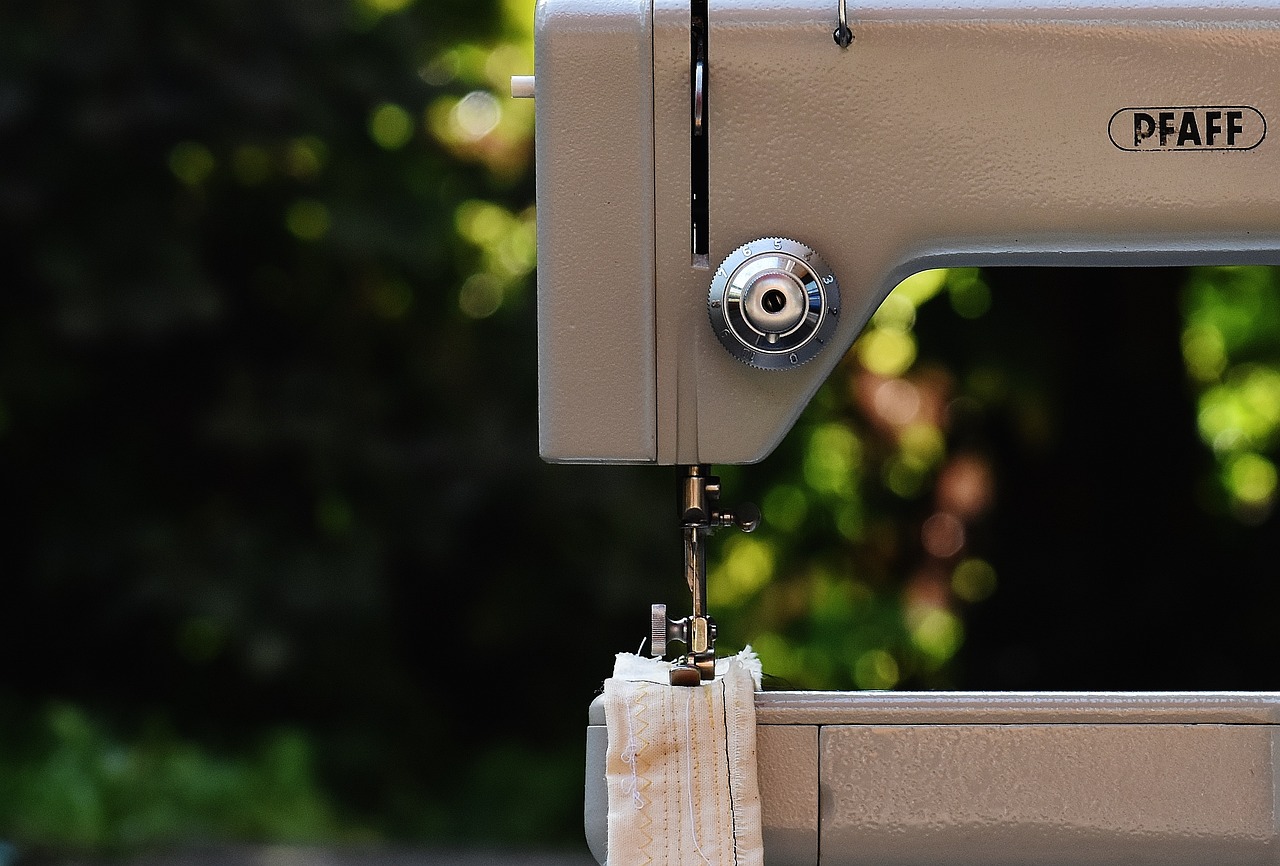
Professional Maintenance Services
Sometimes, despite our best efforts, our beloved sewing scissors may require a bit more than just routine care. That's where come into play. These services are designed to give your scissors the expert attention they need to ensure they perform at their best. Think of it like taking your car to a mechanic for a tune-up; while you can handle basic maintenance, certain issues are best left to the pros.
When should you consider seeking out professional services? Well, if you notice that no matter how much you sharpen or clean your scissors, they still struggle to cut through fabric smoothly, it might be time to call in an expert. Additionally, if you see any signs of damage, such as chips in the blades or misalignment, professional help can restore your scissors to their former glory.
So, what can you expect when you send your scissors off for professional maintenance? Typically, these services include:
- Expert sharpening: Professionals use specialized tools and techniques to ensure your scissors are sharpened to perfection.
- Alignment adjustments: Ensuring the blades are perfectly aligned is crucial for effective cutting. Misalignment can lead to uneven cuts and increased wear.
- Rust removal: If your scissors have developed rust, experts can safely remove it without damaging the blades.
- Cleaning and lubrication: Professional services often include a thorough cleaning and lubrication to keep your scissors in top condition.
Finding the right professional service can be as simple as asking fellow sewing enthusiasts for recommendations or searching online for local options. Many cities have specialized shops that focus on sewing tools, and some even offer mail-in services for your convenience. Just make sure to check reviews and ask about their specific processes to ensure your scissors will be treated with care.
In conclusion, while regular maintenance is essential for keeping your sewing scissors in tip-top shape, don't hesitate to seek out professional help when necessary. After all, investing in the longevity of your tools means investing in the quality of your sewing projects!
Q: How often should I have my scissors professionally sharpened?
A: It depends on how frequently you use them. If you're sewing daily, consider professional sharpening every 6-12 months. For occasional use, once a year might suffice.
Q: Can I use regular sharpening services for my sewing scissors?
A: It's best to choose services that specifically cater to sewing scissors, as they understand the unique requirements and techniques needed for optimal results.
Q: What should I do if my scissors are damaged beyond repair?
A: If the damage is severe, it may be time to invest in a new pair. However, consult with a professional first; they can assess whether repairs are possible.
Frequently Asked Questions
- How often should I clean my sewing scissors?
It's best to clean your sewing scissors after every few uses, especially if you've been cutting fabric with lots of debris or sticky residue. Regular cleaning helps maintain their performance and prevents rust.
- What is the best way to sharpen my sewing scissors?
You can sharpen your sewing scissors using a sharpening stone, a honing tool, or even by taking them to a professional. If you're going the DIY route, make sure to follow the angle of the blade for the best results.
- What should I avoid doing to keep my scissors in good condition?
Avoid cutting materials that are too thick or hard, like cardboard or plastic, as this can damage the blades. Also, never leave your scissors in damp areas, as moisture can lead to rust.
- How can I tell if my scissors are dull?
If you notice that your scissors are struggling to cut through fabric smoothly or if they leave frayed edges, it's a clear sign that they need sharpening. Trust your instincts—if they feel off, they probably are!
- Is it better to store my scissors in a case or a drawer?
Storing your scissors in a case is often preferable, as it protects the blades from accidental damage and keeps them sharp. If using a drawer, ensure they are stored in a way that the blades are not touching other items.
- When should I consider professional maintenance for my scissors?
If your scissors have become severely dull or damaged, or if you're unsure about sharpening them yourself, it's wise to seek professional help. They have the tools and expertise to restore your scissors to optimal condition.
- Can I use the same scissors for different types of fabric?
While it's possible, it's not advisable. Using the same scissors for different fabrics can lead to dulling and may transfer fibers, which can affect the quality of your cuts. It's best to have dedicated scissors for various materials.
- What are the signs that my scissors need to be replaced?
If your scissors have chips in the blades, are bent, or are unable to be sharpened back to a functional state, it may be time to consider a replacement. Investing in a good pair of scissors can save you frustration in the long run.


















